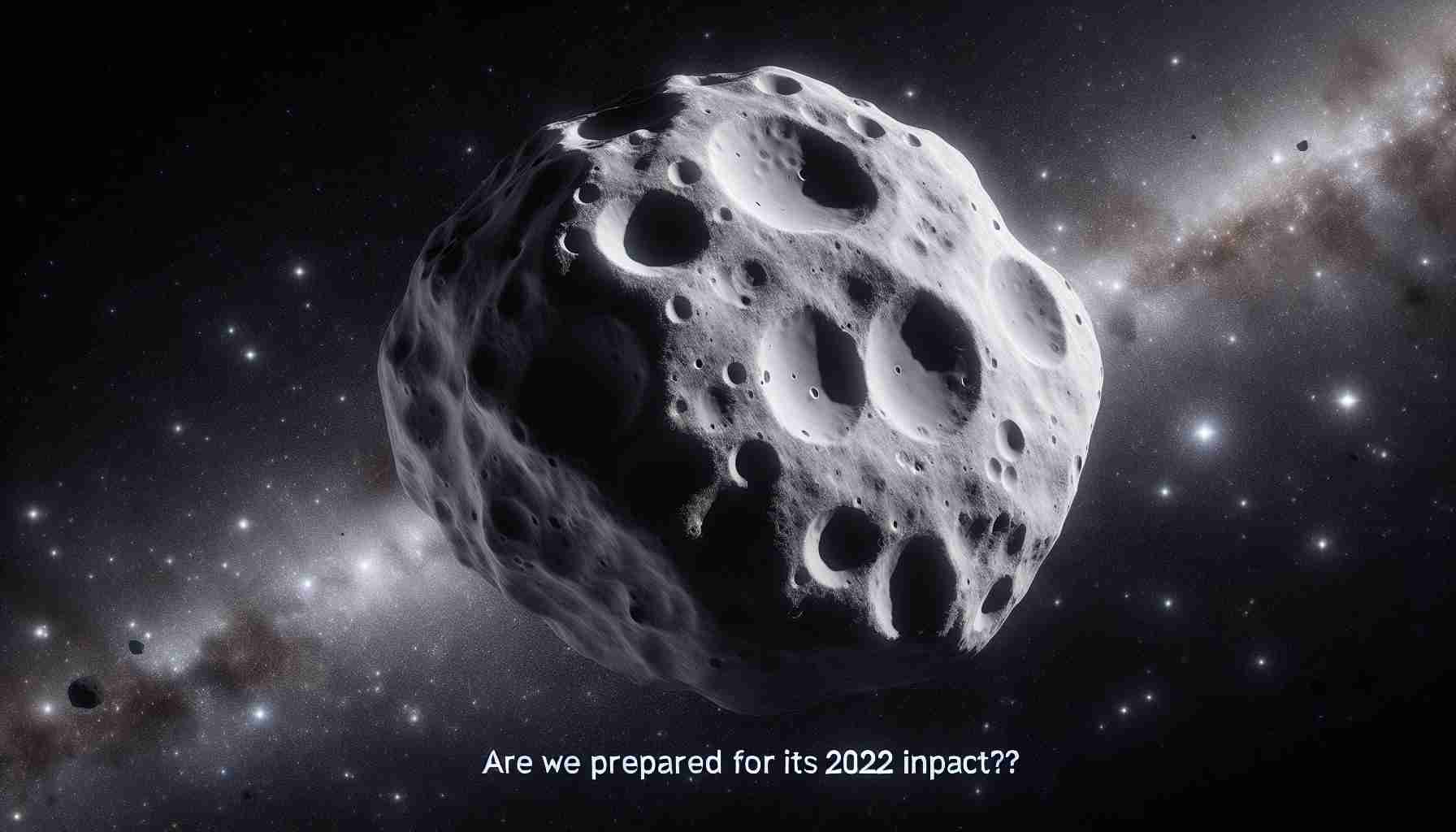- An asteroid named 2024 YR4 may pose a threat to Earth on December 22, 2032, with a 1-in-83 chance of collision.
- The asteroid measures between 130 to 300 feet, potentially impacting with the force of 8 megatons of TNT.
- Under constant surveillance by NASA’s automated Sentry risk list since 2024.
- A 99% likelihood exists for a harmless trajectory, though continuous monitoring is vital for updated predictions.
- Ongoing advancements in space observation enhance predictive abilities and encourage asteroid deflection innovations.
- Balancing public awareness with calm preparedness is crucial to prevent panic or misinformation.
- Staying informed and vigilant is key to understanding and mitigating cosmic risks.
Prepare for a cosmic showdown as an asteroid named 2024 YR4 races through space, posing a possible threat to Earth on December 22, 2032. With a size ranging between 130 to 300 feet, this space rock has sparked attention with a 1-in-83 chance of colliding with our planet. While it won’t doom humanity, its potential impact could explode with the force of 8 megatons of TNT—creating chaos, especially where populations are dense.
First flagged by the NASA automated Sentry risk list in 2024, this near-Earth object is under constant surveillance. Despite the 99% likelihood of a harmless trajectory, experts emphasize the necessity of ongoing observation to adjust predictions and prepare for any uncertainties.
The real message here is the critical importance of staying informed and vigilant. Continued technological advancements in space monitoring systems will enhance our predictive capabilities, allowing us to better assess such cosmic risks. In the realm of space research, this also fuels the push toward innovative asteroid deflection strategies—aiming to shield our world from future threats.
However, as we rely on vigilant monitoring and potential mitigation techniques, it’s crucial to balance public awareness with calm preparedness, avoiding any panic or misinformation. Remember, keeping one eye on the stars could be the key to preserving life on Earth. As scientists decode the universe’s mysteries, we remain on high alert for whatever may be lurking among the cosmic shadows.
Stay tuned and watch the skies; the universe always has surprises in store!
Will 2024 YR4 Bring the Next Great Catastrophe? Here’s What You Need to Know!
Key Information About 2024 YR4
As the space community turns its gaze towards the stars, the asteroid known as 2024 YR4 emerges as a potential cosmic threat with its trajectory possibly linking it with Earth on December 22, 2032. Here are some key points to help you understand this situation better:
– Size and Impact Potential: Measuring between 130 to 300 feet, this asteroid carries an explosive potential equivalent to 8 megatons of TNT. In comparison, the explosion energy is over 500 times the energy released by the atomic bomb dropped on Hiroshima, highlighting the potentially catastrophic effects if it hits populated regions.
– Collision Probability and Monitoring: The asteroid was added to NASA’s Sentry risk list in 2024, with experts calculating a 1-in-83 chance of impact—approximately 1.2% probability. Though the odds tilt towards a harmless path, constant surveillance is crucial.
– Enhancements in Space Monitoring and Deflection: Technological advancements are enhancing our ability to predict and potentially mitigate such threats. Systems like the Near-Earth Object Wide-field Infrared Survey Explorer (NEOWISE) and other monitoring programs aim to boost understanding and readiness.
– Public Awareness and Preparedness: It is essential to foster informed public consciousness without sowing unnecessary panic. Continual communication on developments plays a vital role.
Important Questions Answered
1. What are the latest technologies being developed to prevent asteroid impacts?
Asteroid deflection has become an integral focus in space research, with various strategies being explored. This includes kinetic impactors, where spacecraft could be sent to collide with an asteroid to change its trajectory. Research into the use of gravitational tractors, which would involve a spacecraft hovering near the asteroid, using gravitational attraction to alter its path, is also underway. Both approaches emphasize the significance of early detection and timely intervention.
2. How reliable are current prediction methods for tracking near-Earth objects?
Current methods leverage a combination of observational data and advanced computational models to track asteroids. These include optical telescopes, radio technology, and increasingly, infrared sensors from space-based telescopes like NEOWISE. Though highly sophisticated, these models continuously improve in accuracy as more data becomes available and algorithms become more advanced, underpinning the importance of constant observation and recalibration.
3. What are the potential economic impacts of an asteroid strike on populated areas?
The economic repercussions would be multifaceted. Infrastructure damage, disruption to local economies, loss of life, and environmental devastation could translate into billions or even trillions in costs. Furthermore, indirect economic effects could ripple globally, affecting trade and international relations. Preparing economic models to understand and mitigate such impacts is a growing field within disaster management and space policy.
Suggested Related Links
To explore more about monitoring asteroids and future space strategies, consider visiting these authoritative sources:
– Nasa – For detailed information on how NASA tracks and manages asteroid threats.
– Jet Propulsion Laboratory – Offering insights into current missions and research on asteroid monitoring.
– European Space Agency – Gain perspective on international collaboration and efforts in space monitoring.
Stay observant of new developments in this cosmic journey as science unfolds the universe’s grand secrets and ensures our planetary safety!













